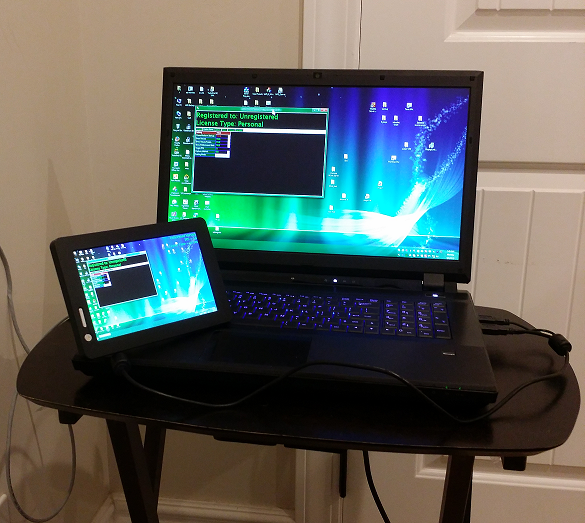
Introduction
10/11/2017
The ever-evolving nature of presentations:
In conference rooms and classrooms all over the world chalkboards are already history, having been transitioned to whiteboards... Today while whiteboards remain standard equipment, most people have already gone a step further in adopting slide-projectors, or projectors in general. Slide projection is nice, yet it lacks one of the aspects of using a whiteboard or chalkboard of interactivity with the audience. Especially in a classroom structure, this can be less than desirable when the presentation is given effectively on-the-fly and changed depending on the interests of the people viewing it.
In the modern presentations, projectors still hold a place, yet now we prefer to use VGA compatible projectors connected to computers rather than using transparencies. Unfortunately while computers are very versatile, using programs such as Microsoft PowerPoint alone still is going the way of pre-preparation and lacks that freedom of interactivity. Of course we can alternatively use any software that we want on a PC, and wing-it in our lectures ... however, this is rather problematic in that it's hard for us to tell the audience what is actually important and what they should be focusing on. Despite this, it's still alot easier to keep the interest of the audience if they are permitted to interact and control the flow of the lecture.
Given interactivity is desirable, a solution was needed to combine the best of both worlds (whiteboarding and projection). The feature-set of just a projector showing your screen alone isn't good enough, and we still want the concept of slides in our presentations, at the same time we need the ability to easily create slides on-the-fly as we go. That solution I'm talking about is the projector "freeze" feature. With the ability to freeze the projection screen, the presenter using his or her PC is free to do other things on the system and prepare their next freeze or snapshot for the audience.
Unfortunately it's just not that simple:
Despite the ability to freeze the display and do other things on the PC without confusing the audience, there's still no record of the presentation nor a way to go back to prior freezes. Which means that, unlike a pre-prepared presentation, we have no means to revisit past portions for answering questions. Additionally, projectors with a freeze function are also quite expensive ... especially when they must be deployed in multiple rooms throughout a building.
What is DisplayClone?
DisplayClone is a universal, non driver-based, software replacement of the Windows Clone-Mode feature. It permits mirroring one display's contents to another display, even at dissimilar output resolutions (such as maintaining the native resolution of another device that doesn't match), and across completely different hardware devices. Additionally, the idea of Clone-Mode has been improved on in many ways to make it easier and more useful for people to give presentations.

Getting DisplayClone:

Features:
-And when we say this, we mean it and swear by it! [Annoying Nags?]
-Supports:
-Have Windows XP or newer? If you do, we've got you covered!
-Including:
-We understand that when you press screenshot, you mean it!